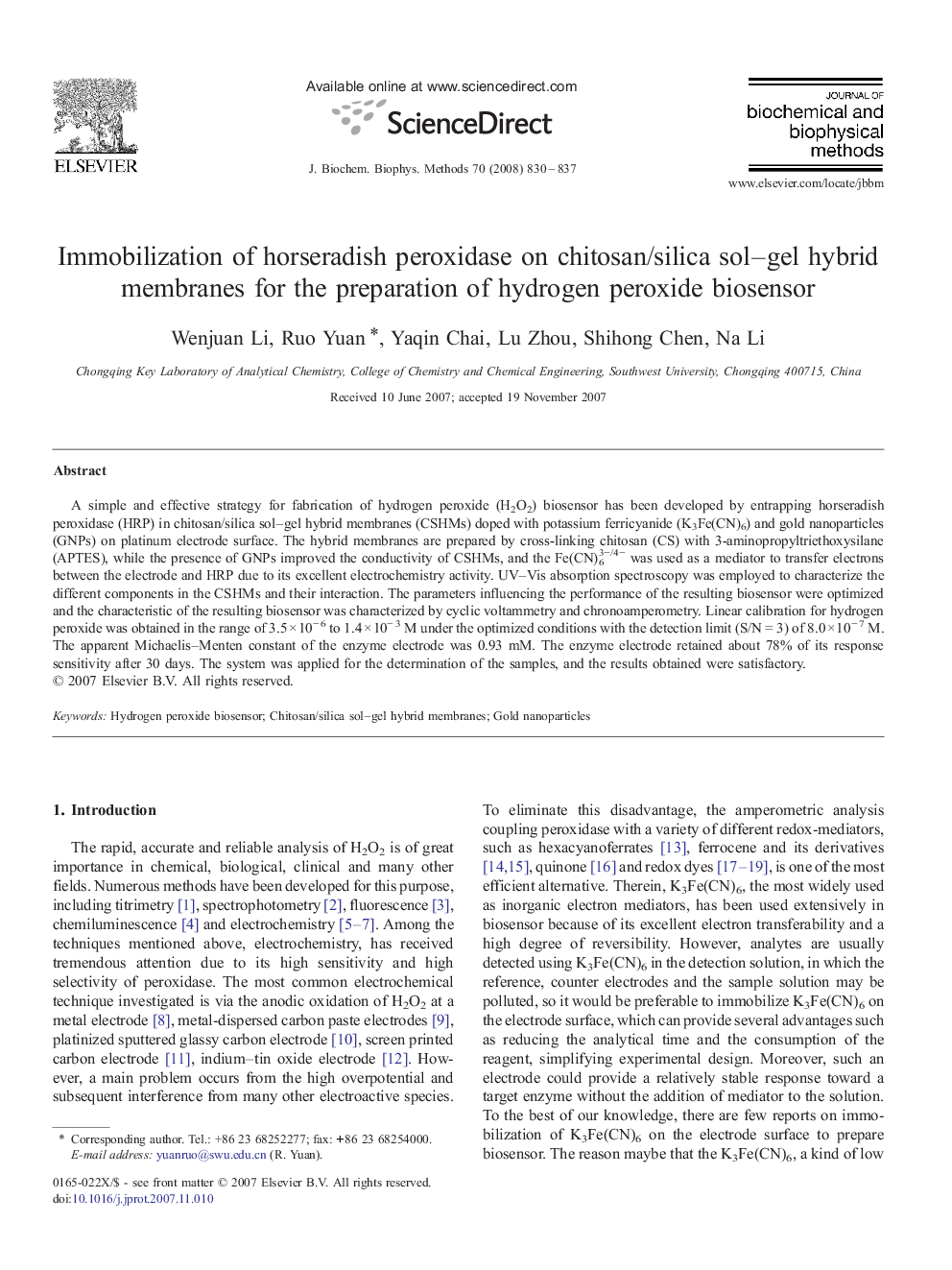| Article ID | Journal | Published Year | Pages | File Type |
|---|---|---|---|---|
| 1988356 | Journal of Biochemical and Biophysical Methods | 2008 | 8 Pages |
A simple and effective strategy for fabrication of hydrogen peroxide (H2O2) biosensor has been developed by entrapping horseradish peroxidase (HRP) in chitosan/silica sol–gel hybrid membranes (CSHMs) doped with potassium ferricyanide (K3Fe(CN)6) and gold nanoparticles (GNPs) on platinum electrode surface. The hybrid membranes are prepared by cross-linking chitosan (CS) with 3-aminopropyltriethoxysilane (APTES), while the presence of GNPs improved the conductivity of CSHMs, and the Fe(CN)63−/4− was used as a mediator to transfer electrons between the electrode and HRP due to its excellent electrochemistry activity. UV–Vis absorption spectroscopy was employed to characterize the different components in the CSHMs and their interaction. The parameters influencing the performance of the resulting biosensor were optimized and the characteristic of the resulting biosensor was characterized by cyclic voltammetry and chronoamperometry. Linear calibration for hydrogen peroxide was obtained in the range of 3.5 × 10− 6 to 1.4 × 10− 3 M under the optimized conditions with the detection limit (S/N = 3) of 8.0 × 10− 7 M. The apparent Michaelis–Menten constant of the enzyme electrode was 0.93 mM. The enzyme electrode retained about 78% of its response sensitivity after 30 days. The system was applied for the determination of the samples, and the results obtained were satisfactory.
